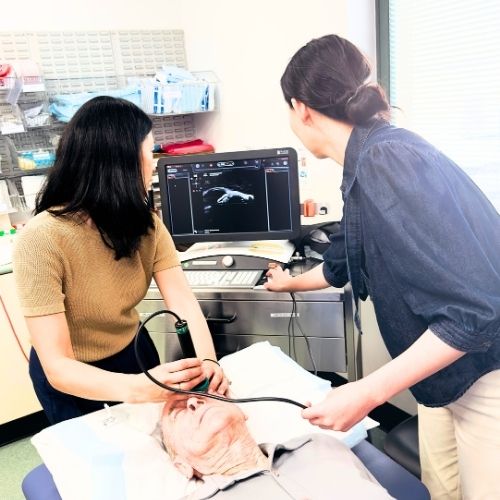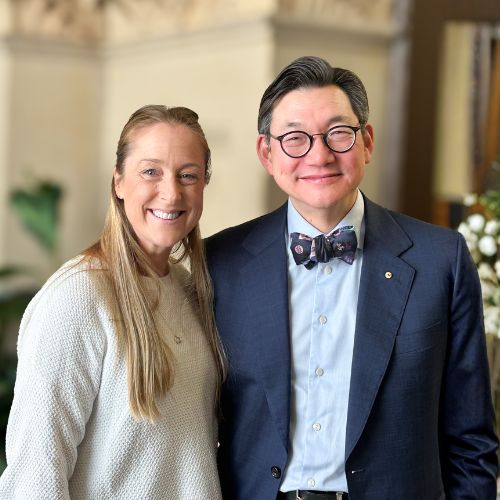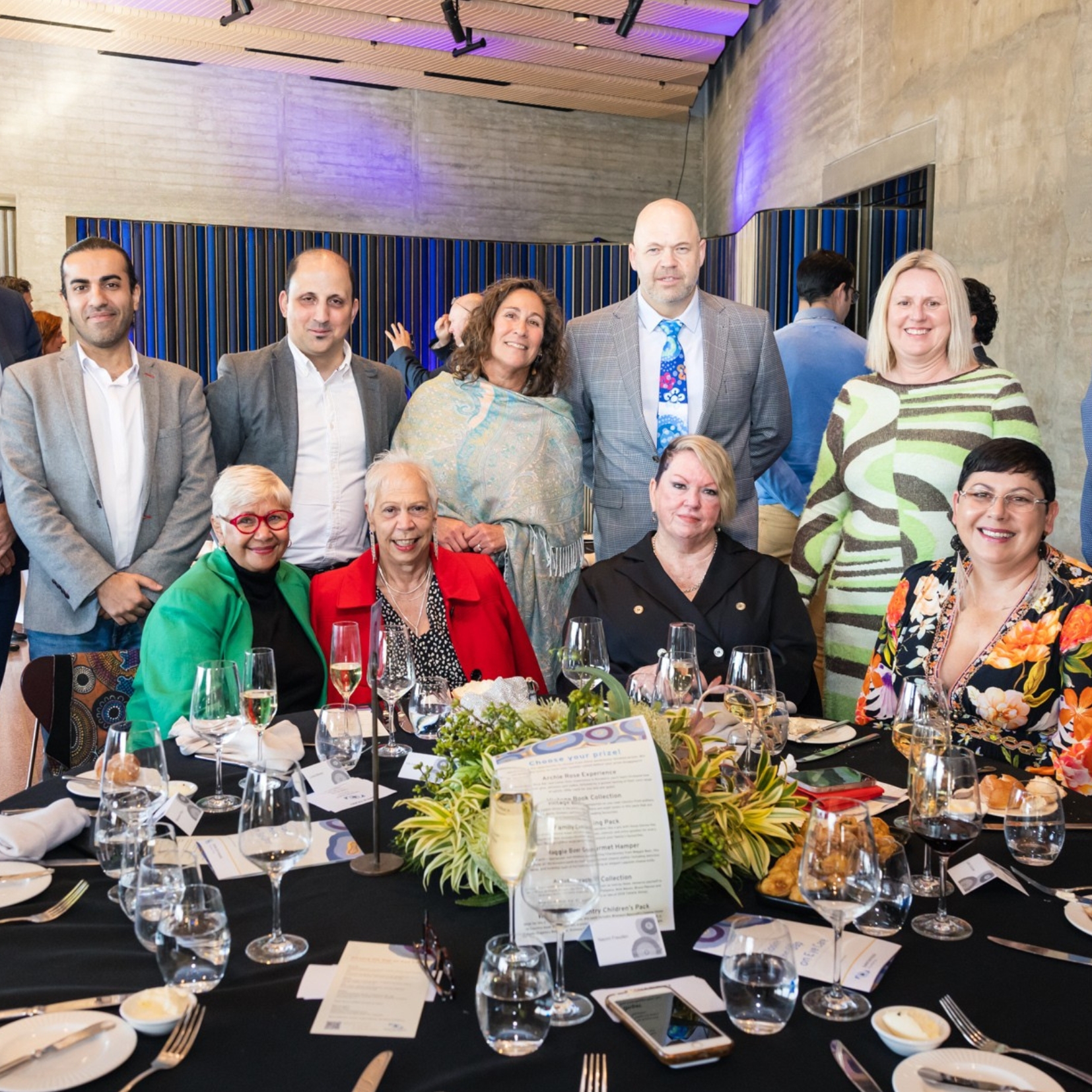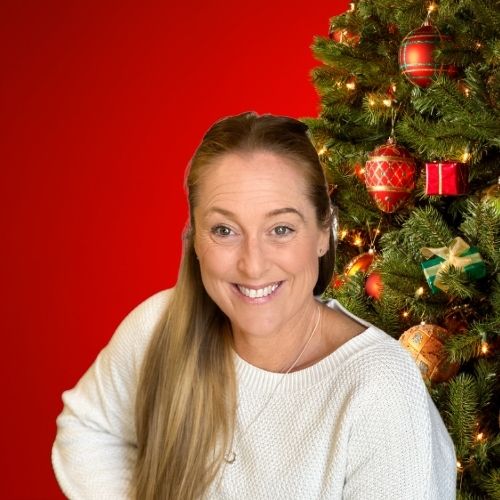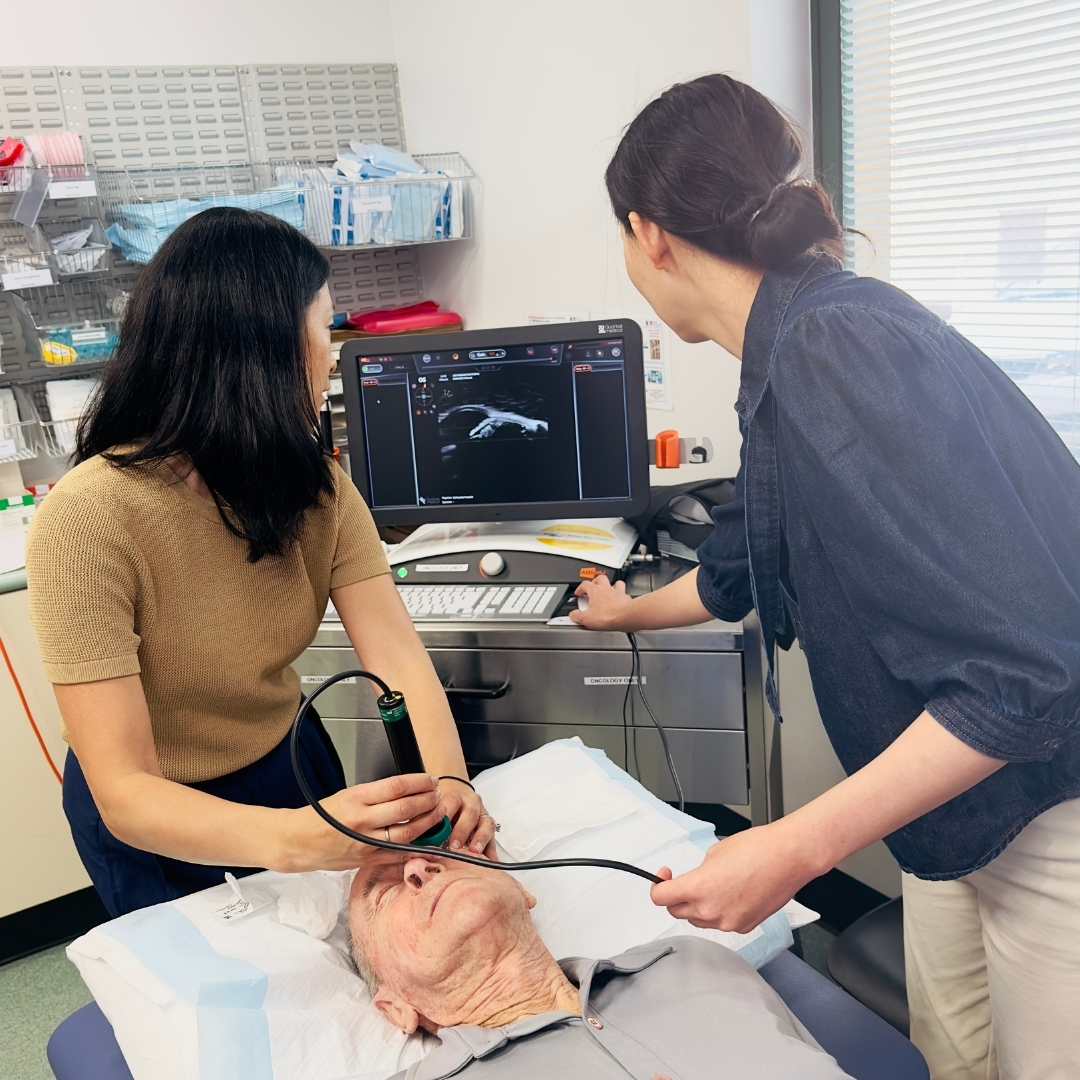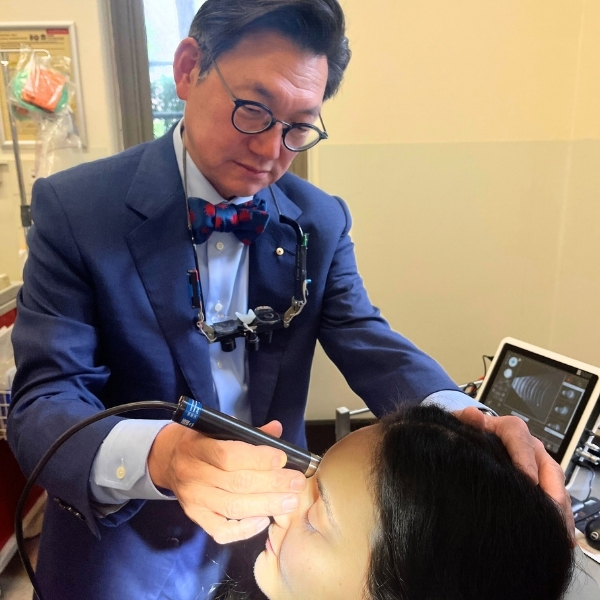At just four years old, Jake’s world was suddenly thrown into uncertainty. A routine eye check-up, which seemed like a simple part of growing up, turned into something far more significant when his parents, Peter and Lucy, were referred to the Sydney Eye Hospital. It was there that they learned about a rare condition that would change the course of their son’s future.

“When we got the referral, we didn’t know what to expect,” Peter recalls. “We thought it would just be a regular check-up, and then we’d be on our way. But within minutes of meeting Melanie Lai and her team, it was clear that this was more serious.”
Melanie Lai is the Department Head of Orthoptics at Sydney Eye Hospital, the largest Orthoptic department in NSW Health.
“We provide comprehensive assessments and treatment for patients with eye movement disorders, double vision, diagnostic assessments for many chronic eye diseases, and also childhood vision impairment, which is why we met with Jake and his family,” Melanie says.

A critical diagnosis
Using specialist equipment donated by the Sydney Eye Hospital Foundation, Melanie could see the back of Jake’s left eye.
Close examination of the images revealed that the lens was beginning to take on a cone shape—an early sign of a rare condition known as lenticonus.
“In Jake’s particular case, the lenticonus wasn’t immediately severe, but it required urgent attention,” Melanie explains.
“Without treatment, it could have led to serious vision problems, including a risk of significant visual impairment and potential social difficulties. Lenticonus can cause the lens to become misshapen over time, which can disrupt normal visual development and create complications as children grow.”
Peter and Lucy were understandably concerned, but Melanie and her team were there every step of the way, providing both reassurance and expertise.
“I’d never heard of lenticonus before,” says Peter. “But Melanie explained everything so compassionately and clearly. We felt comfortable knowing we were in good hands.”
Starting treatment
After the diagnosis, Jake was referred to a specialist in paediatric ophthalmology. This careful assessment revealed that Jake wasn’t yet a candidate for surgery, given his age and the relatively minor extent of the lens damage. However, treatment was still necessary to help prevent further damage.
“Lenticonus requires a delicate balance of treatment, especially in younger children,” Dr. Donaldson explains. “For Jake, we recommended a course of daily patching to strengthen the weaker eye and prevent further complications.”
Peter and Lucy were initially concerned about Jake's ability to tolerate the patching therapy.
“I had read articles, as a health professional, about the struggles of patching, especially at his age,” Lucy admits. “We weren’t sure how well he would function or whether he would be distressed by it. It was a big concern for us, especially with Jake’s normally bright and happy personality.”
But to their surprise, Jake took it in stride.
“The first time Jake put on the patch, he said he couldn’t see much, which confirmed my initial fears,” Lucy recalls. “But he quickly adjusted, and we decided as a family to be persistent. We even wore patches ourselves and invited the neighbour’s kids over to wear them too. We made it fun, and Jake’s daycare teachers were incredibly supportive, complimenting him on his patch and encouraging him.”
“All his friends thought it was cool,” adds Peter. “He had had another friend also who wore a patch, and they had a patch play date.”

Progress and encouragement
Jake’s progress has been remarkable. With consistent patching, his vision in his weaker eye improved from a measurement of 48 to 15.
"This is an excellent result for someone so young with lenticonus," Melanie says. "We aim for Jake to have stable, functional vision and to avoid surgery. While there is no cure for lenticonus, we are optimistic that with continued patching and regular monitoring, Jake’s condition can be managed effectively."
Peter and Lucy are hopeful that, with ongoing treatment, Jake will avoid surgery.
“We are encouraged by his progress and hope that his vision will continue to improve,” Peter says.
“Our goal is for him to be able to engage fully in all activities without the risk of his condition impacting his daily life, especially if something were to happen to his good eye.”
Jake’s hopes for the future
Looking ahead, Jake’s parents have big hopes for his future.
“We hope Jake will be able to engage in any activity, hobby, or interest, and function normally in his education, profession, and social life,” Lucy says. “We want him to pursue all his passions and achieve everything he dreams of.”
One of the sweetest moments for the family came during a follow-up appointment when Jake showed off how much his vision had improved.
“When we went back for his check-up, Jake proudly told the nurse, ‘I can see more lines!’ and he pointed out letters, saying ‘A for Arthur’ and ‘O for Ollie,’” Lucy recalls, laughing.
“It was such a heartwarming moment, and it made us feel like we were really making a difference in his life.”
A future full of possibilities
“Jake’s journey has given us hope for his future,” Peter says, his voice filled with gratitude. “Without the expert care from Sydney Eye hospital team, we might have missed a critical opportunity to improve his eyesight. The team’s dedication and kindness have truly been life-changing for us.”
“It’s stories like Jake’s that show just how vital the work of Sydney Eye Hospital is,” says Melanie. “With the support of generous donors, we can continue to provide expert care for children like Jake, ensuring they have the best chance to grow up with healthy vision.”
Jake’s progress is a testament to the power of early detection, expert treatment, and the unwavering support of his family. Thanks to donors like you, children like Jake can receive the life-changing care they need to see the world more clearly.


